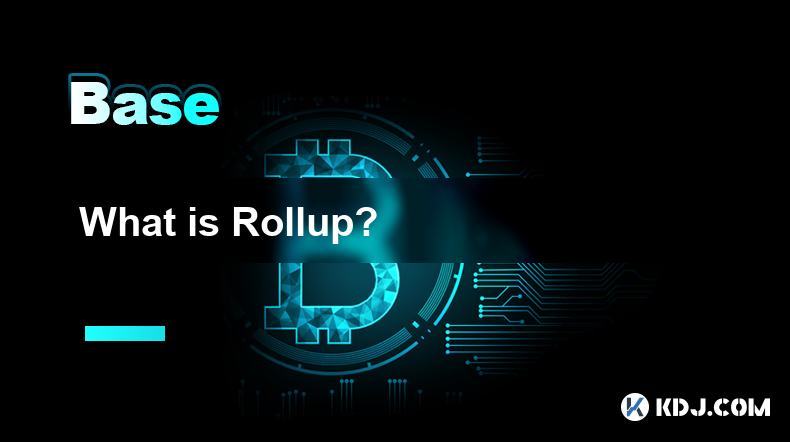-
 Bitcoin
Bitcoin $84,533.5946
-0.39% -
 Ethereum
Ethereum $1,579.4500
-1.34% -
 Tether USDt
Tether USDt $1.0000
0.02% -
 XRP
XRP $2.0576
-0.68% -
 BNB
BNB $588.6240
-0.03% -
 Solana
Solana $136.5689
-1.00% -
 USDC
USDC $1.0000
0.01% -
 TRON
TRON $0.2459
2.00% -
 Dogecoin
Dogecoin $0.1537
-1.97% -
 Cardano
Cardano $0.6144
-1.04% -
 Chainlink
Chainlink $13.1668
3.27% -
 UNUS SED LEO
UNUS SED LEO $9.3283
0.18% -
 Avalanche
Avalanche $19.4724
-1.07% -
 Toncoin
Toncoin $3.0009
1.64% -
 Stellar
Stellar $0.2420
-1.06% -
 Shiba Inu
Shiba Inu $0.0...01249
2.75% -
 Hedera
Hedera $0.1657
0.44% -
 Sui
Sui $2.1062
-1.06% -
 Bitcoin Cash
Bitcoin Cash $333.2886
-0.13% -
 Polkadot
Polkadot $3.9053
4.73% -
 Hyperliquid
Hyperliquid $17.5243
-1.44% -
 Litecoin
Litecoin $76.5313
1.75% -
 Dai
Dai $1.0000
0.01% -
 Bitget Token
Bitget Token $4.4002
-2.43% -
 Ethena USDe
Ethena USDe $0.9993
0.02% -
 Pi
Pi $0.6305
-2.54% -
 Monero
Monero $215.9043
1.33% -
 Uniswap
Uniswap $5.2485
0.07% -
 Pepe
Pepe $0.0...07672
4.72% -
 Aptos
Aptos $5.0535
4.20%
What is Rollup?
Rollups, as a Layer 2 scaling solution for Ethereum, overcome transaction fee bottlenecks and enhance throughput by processing transactions off-chain.
Feb 15, 2025 at 04:49 pm

Key Points
- Rollups are a Layer 2 scaling solution for Ethereum that process transactions off-chain and submit them to the Ethereum blockchain as a single, compressed transaction.
- Rollups improve scalability by reducing transaction fees and increasing transaction throughput.
- There are two main types of rollups: Optimistic rollups and Zero-Knowledge (ZK) rollups.
- Optimistic rollups assume that transactions are valid until proven otherwise, while ZK rollups provide cryptographic proof of validity.
- Rollups have the potential to significantly improve the scalability and efficiency of Ethereum.
What is Rollup?
Rollups are a Layer 2 scaling solution for Ethereum that process transactions off-chain and submit them to the Ethereum blockchain as a single, compressed transaction. This approach improves scalability by reducing transaction fees and increasing transaction throughput.
Rollups are similar to other Layer 2 solutions, such as sidechains and state channels. However, rollups have some key advantages over these other solutions.
- Scalability: Rollups can process a much higher number of transactions per second than sidechains and state channels.
- Security: Rollups inherit the security of the Ethereum blockchain.
- Interoperability: Rollups can interoperate with other Ethereum-based applications and services.
Types of Rollups
There are two main types of rollups: Optimistic rollups and Zero-Knowledge (ZK) rollups.
Optimistic Rollups
Optimistic rollups assume that transactions are valid until proven otherwise. This means that transactions are processed off-chain without any additional verification. To ensure that transactions are valid, optimistic rollups use a fraud proof mechanism. If a fraud proof is submitted, the transaction is reverted and the malicious actor is penalized.
Zero-Knowledge (ZK) Rollups
ZK rollups provide cryptographic proof of validity for transactions. This means that transactions are verified off-chain before they are submitted to the Ethereum blockchain. ZK rollups are more secure than optimistic rollups because they do not rely on a fraud proof mechanism. However, ZK rollups are also more complex to implement and can be less efficient than optimistic rollups.
Benefits of Rollups
Rollups offer a number of benefits over other Layer 2 scaling solutions.
- Scalability: Rollups can significantly improve the scalability of Ethereum by reducing transaction fees and increasing transaction throughput.
- Security: Rollups inherit the security of the Ethereum blockchain.
- Interoperability: Rollups can interoperate with other Ethereum-based applications and services.
Challenges of Rollups
Rollups are a promising scaling solution, but they also face some challenges.
- Complexity: Rollups are complex to implement and maintain.
- Security: Rollups can be vulnerable to security attacks, such as fraud proofs and ZK proofs.
Future of Rollups
Rollups are a promising scaling solution for Ethereum, and they have the potential to significantly improve the scalability and efficiency of the network. However, rollups are still under development, and there are some challenges that need to be addressed before they can be widely adopted.
FAQs
- What is the difference between a rollup and a sidechain?
Rollups and sidechains are both Layer 2 scaling solutions for Ethereum. However, there are some key differences between the two solutions. Rollups process transactions off-chain and submit them to the Ethereum blockchain as a single, compressed transaction. Sidechains, on the other hand, are independent blockchains that are connected to the Ethereum blockchain. Rollups are more scalable than sidechains, but they are also more complex to implement.
- What is the difference between an optimistic rollup and a ZK rollup?
Optimistic rollups and ZK rollups are the two main types of rollups. Optimistic rollups assume that transactions are valid until proven otherwise, while ZK rollups provide cryptographic proof of validity. Optimistic rollups are more efficient than ZK rollups, but ZK rollups are more secure.
- What are the challenges of rollups?
Rollups are still under development, and there are some challenges that need to be addressed before they can be widely adopted. These challenges include complexity, security, and interoperability.
- What is the future of rollups?
Rollups are a promising scaling solution for Ethereum, and they have the potential to significantly improve the scalability and efficiency of the network. However, rollups are still under development, and there are some challenges that need to be addressed before they can be widely adopted.
Disclaimer:info@kdj.com
The information provided is not trading advice. kdj.com does not assume any responsibility for any investments made based on the information provided in this article. Cryptocurrencies are highly volatile and it is highly recommended that you invest with caution after thorough research!
If you believe that the content used on this website infringes your copyright, please contact us immediately (info@kdj.com) and we will delete it promptly.
- Pi Network (PI) Price Prediction: It Could Get Ugly
- 2025-04-21 00:25:13
- Dogecoin (DOGE) Holders Celebrate Doge Day on April 20, 2025, as the Community Awaits a Possible DOGE ETF
- 2025-04-21 00:25:13
- A renewed wave of optimism is spreading through the Dogecoin market
- 2025-04-21 00:20:13
- Solana (SOL) Price Wedged Between Two Crucial Levels, Breakout or Breakdown?
- 2025-04-21 00:20:13
- Bitcoin BTC/USD, Ethereum ETH/USD, XRP XRP/USD, and Dogecoin DOGE/USD Moved Sideways Amid Tariff Uncertainties
- 2025-04-21 00:15:12
- The Solana Price Was One of the Few Highlights
- 2025-04-21 00:15:12
Related knowledge

The function of cross-chain bridges in blockchain
Apr 19,2025 at 10:01am
The function of cross-chain bridges in blockchain is a pivotal topic within the cryptocurrency ecosystem, as these tools enable the seamless transfer of assets and data across different blockchain networks. This article delves into the various aspects of cross-chain bridges, explaining their importance, how they work, and the benefits and challenges the...

How the Lightning Network improves Bitcoin efficiency
Apr 17,2025 at 08:56pm
The Lightning Network represents a significant advancement in the Bitcoin ecosystem, aiming to address some of the most pressing issues related to transaction speed and cost. By enabling off-chain transactions, the Lightning Network drastically improves Bitcoin's efficiency, allowing for faster and cheaper transactions. This article will explore how the...

Market value ranking basis in cryptocurrencies
Apr 20,2025 at 05:08am
The market value ranking in cryptocurrencies is a crucial metric that investors and enthusiasts use to gauge the relative size and importance of different digital assets. This ranking is primarily based on the total market capitalization of each cryptocurrency, which is calculated by multiplying the current price of a single unit of the cryptocurrency b...

What is the role of nodes in the blockchain
Apr 20,2025 at 03:29pm
The role of nodes in the blockchain is fundamental to the operation and integrity of the network. Nodes are the individual computers or devices that participate in the blockchain network. They play a critical role in maintaining the decentralized nature of blockchain technology, ensuring that transactions are verified, recorded, and distributed across t...

Analysis of the KYC process of cryptocurrency exchanges
Apr 17,2025 at 05:07pm
The Know Your Customer (KYC) process is a critical component in the operations of cryptocurrency exchanges. It serves as a regulatory measure to prevent fraud, money laundering, and other illicit activities. KYC procedures are designed to verify the identity of users and ensure compliance with financial regulations. This article delves into the various ...

The operating mechanism behind the stablecoin USDT
Apr 20,2025 at 08:08am
The stablecoin USDT, also known as Tether, is a cryptocurrency designed to maintain a stable value by pegging it to a reserve asset, typically the US dollar. Understanding the operating mechanism behind USDT is crucial for anyone interested in the cryptocurrency market, as it plays a significant role in trading and liquidity. This article will delve int...

The function of cross-chain bridges in blockchain
Apr 19,2025 at 10:01am
The function of cross-chain bridges in blockchain is a pivotal topic within the cryptocurrency ecosystem, as these tools enable the seamless transfer of assets and data across different blockchain networks. This article delves into the various aspects of cross-chain bridges, explaining their importance, how they work, and the benefits and challenges the...

How the Lightning Network improves Bitcoin efficiency
Apr 17,2025 at 08:56pm
The Lightning Network represents a significant advancement in the Bitcoin ecosystem, aiming to address some of the most pressing issues related to transaction speed and cost. By enabling off-chain transactions, the Lightning Network drastically improves Bitcoin's efficiency, allowing for faster and cheaper transactions. This article will explore how the...

Market value ranking basis in cryptocurrencies
Apr 20,2025 at 05:08am
The market value ranking in cryptocurrencies is a crucial metric that investors and enthusiasts use to gauge the relative size and importance of different digital assets. This ranking is primarily based on the total market capitalization of each cryptocurrency, which is calculated by multiplying the current price of a single unit of the cryptocurrency b...

What is the role of nodes in the blockchain
Apr 20,2025 at 03:29pm
The role of nodes in the blockchain is fundamental to the operation and integrity of the network. Nodes are the individual computers or devices that participate in the blockchain network. They play a critical role in maintaining the decentralized nature of blockchain technology, ensuring that transactions are verified, recorded, and distributed across t...

Analysis of the KYC process of cryptocurrency exchanges
Apr 17,2025 at 05:07pm
The Know Your Customer (KYC) process is a critical component in the operations of cryptocurrency exchanges. It serves as a regulatory measure to prevent fraud, money laundering, and other illicit activities. KYC procedures are designed to verify the identity of users and ensure compliance with financial regulations. This article delves into the various ...

The operating mechanism behind the stablecoin USDT
Apr 20,2025 at 08:08am
The stablecoin USDT, also known as Tether, is a cryptocurrency designed to maintain a stable value by pegging it to a reserve asset, typically the US dollar. Understanding the operating mechanism behind USDT is crucial for anyone interested in the cryptocurrency market, as it plays a significant role in trading and liquidity. This article will delve int...
See all articles





















































































